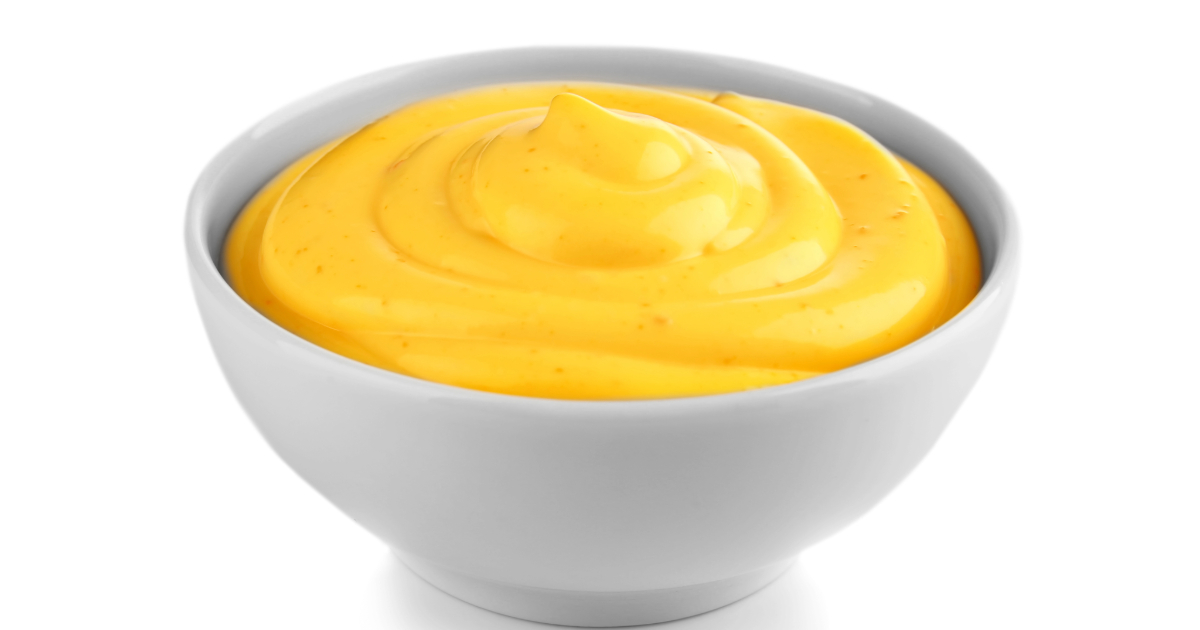Cheese sauce is a comforting and delicious addition to many dishes, from mac and cheese to nachos and more.

However, traditional cheese sauces rely on dairy products like milk, butter, and cheese.
For those avoiding dairy due to dietary restrictions, allergies, or lifestyle choices, finding good cheese sauce substitutes can be a challenge.
Why Make Dairy-Free Cheese Sauces?
There are several reasons why someone may want or need to avoid dairy products:
- Lactose intolerance - Around 65% of the human population has some degree of lactose intolerance, meaning they lack enough of the enzyme lactase to properly digest the milk sugar lactose. Consuming dairy can lead to gas, bloating, and other digestive issues in these individuals.
- Milk allergy - About 2-3% of children have an allergy to milk proteins like casein and whey. These allergies cause symptoms like hives, vomiting, and breathing difficulties after consuming dairy. Many children outgrow milk allergies but some carry them into adulthood.
- Vegan diet - Vegans avoid all animal products, including dairy, for ethical, environmental, or health reasons. Plant-based diets have been linked to numerous benefits like lower cholesterol, blood pressure, and inflammation.
No matter the reason for avoiding dairy, having versatile cheese sauce substitutes can help ensure a flavorful, satisfying diet.
Dairy-Free Cheese Sauce Ingredients
The key to making any creamy sauce is having ingredients that can mimic the texture and mouthfeel of dairy. Here are some of the most commonly used dairy-free ingredients for cheese sauces:
Nuts and Seeds
Nuts like cashews and seeds like sunflower seeds can be soaked, blended, and turned into a rich, creamy base for sauces and cheeses. They provide healthy fats, protein, and creaminess. Other options include almonds and macadamia nuts. Those with nut allergies can use seeds like sunflower or pumpkin seeds instead.
Key Takeaway: Nuts and seeds like cashews and sunflower seeds make excellent creamy, dairy-free cheese sauce bases.
Starchy Vegetables
Starchy vegetables contain starches that help thicken and add body to dairy-free sauces. Potatoes are commonly used but options like cauliflower, parsnips, and sweet potatoes also work. Cook the veggies until very soft before blending into sauces.
Thickeners
Adding starches helps give dairy-free cheese sauces the proper texture. Good options include:
- Tapioca starch/flour - Extracted from cassava, tapioca makes sauces glossy and stretchy.
- Arrowroot - Adds thickness with a neutral taste.
- Cornstarch - The most common thickener that blends smoothly into sauces.
- Nutritional yeast - In addition to thickness, it provides a cheesy umami flavor.
Fats
Healthy fats are needed to make smooth, rich sauces. Good dairy-free choices include olive oil, coconut oil, avocado oil, and vegan butter or margarine. Nuts and seeds also add healthy fats.
Flavor Boosters
To give your cheese sauce authentic cheesy taste, consider adding:
- Nutritional yeast - Provides a cheese-like umami flavor.
- Lemon juice - Bright, tangy acidity like cheese.
- Mustard - Adds depth and cheese-like tang.
- Onion/garlic powders - Savory flavor boosters.
- Smoked paprika - Provides a subtle smokiness.
- Salt - Essential for bringing out all the flavors.
Dairy-Free Milks
Nondairy milks add creaminess while keeping sauces dairy-free. Good options are almond milk, soy milk, oat milk, coconut milk, rice milk, and hemp milk. Choose unsweetened varieties.
Methods for Making Dairy-Free Cheese Sauces
Now that you know what ingredients to use, let's look at some simple methods for putting them together into smooth, cheesy dairy-free sauces:
Nut/Seed Cheese Sauces
For nut and seed-based sauces like classic cashew cheese sauce:
- Soak raw cashews or seeds in hot water for 30-60 minutes to soften. Drain.
- Add soaked nuts/seeds and remaining ingredients (non-dairy milk, nutritional yeast, lemon juice, etc.) to a high-speed blender.
- Blend until completely smooth and creamy, at least 2-3 minutes.
- Taste and adjust seasonings as desired. The sauce is now ready to use.
Vegetable-Based Cheese Sauces
For veggie-loaded sauces:
- Dice potatoes, carrots, cauliflower and any other chosen veggies.
- Boil veggies in broth or water until very tender, about 15-20 minutes.
- Drain veggies, reserving some cooking liquid.
- Add veggies and remaining ingredients to blender with reserved liquid.
- Blend until silky smooth. Add more liquid if needed.
- Season to taste. Enjoy on pasta, potatoes, nachos and more!
Pro Tip: For ultra smooth sauces, pass them through a fine mesh sieve after blending to remove any bits.
Thickener Cheese Sauces
For quick sauces using starches/thickeners:
- Whisk tapioca starch or other thickener into dairy-free milk.
- Cook over medium heat, whisking constantly until thickened, about 5 minutes.
- Remove from heat and whisk in nutritional yeast, mustard, lemon juice and seasonings.
- Let cool slightly before using. The starch helps it stay smooth.
Pro Tip: For an extra velvety texture, blend with an immersion blender after cooking.
No matter which method you use, the possibilities are endless for how to use dairy-free cheese sauces!
Delicious Ways to Use Dairy-Free Cheese Sauces
Dairy-free cheese sauces add flavor, creaminess, and cheesy richness to all kinds of savory dishes:
Pasta and Potatoes
Of course, cheese sauces are perfect drizzled over pasta or potatoes:
- Toss with hot cooked pasta - mac and cheese!
- Top baked potatoes, sweet potatoes or potato wedges
- Mix into mashed potatoes or cauliflower mash
- Add to potato salad or pasta salad recipes
Mexican Favorites
Cheese sauce just makes Mexican food better:
- Use as a dip for tortilla chips and nachos
- Pour over burritos, enchiladas, tacos, and taco salads
- Mix into quesadillas, tamales, or stuffed peppers
- Add to Mexican-style pizza, empanadas, or chilaquiles
Vegetables and Grains
Cheese sauce perfectly coats veggies and grains:
- Serve over cooked broccoli, cauliflower, asparagus, etc.
- Mix into cooked rice or risotto dishes
- Add to veggie bakes and gratin dishes
- Toss with roasted Brussels sprouts or green beans
Appetizers and Snacks
Dip anything into dairy-free cheese sauce!
- Fries and tater tots
- Breaded veggie sticks or chips
- Soft pretzels or breadsticks
- Meatless chicken nuggets or fingers
You can also use it in vegan versions of:
- Cheese ball appetizers
- Artichoke and cheese dip
- Jalapeño poppers or stuffed mushrooms
- Cheese crisps or savory scones
The possibilities are endless for how to use your favorite recipes once you have a good dairy-free cheese sauce on hand. It stores easily in the fridge or freezer, ready whenever cravings strike!
Top Dairy-Free Cheese Sauce Recipes to Try
To get you started, here are some of the most popular and easiest dairy-free cheese sauce recipes:
Casshew Cheese Sauce
This classic cashew-based sauce is rich, tangy, and perfect for mac and cheese or nachos.
Potato Carrot Cheese Sauce
For a lower fat sauce, potatoes and carrots create a creamy base.
Butternut Squash Cheese Sauce
Butternut squash gives this sauce a bright orange hue and sweet flavor.
Nacho Cheese Sauce
With spice and tangy flavor, this sauce is perfect for nachos.
Green Chili Cheese Sauce
This sauce has a kick from green chilis and jalapeños.
Sweet Potato Cheese Sauce
For a vibrant orange sauce, sweet potatoes do the trick.
Tips for Success with Dairy-Free Cheese Sauces
Making creamy, satisfying dairy-free cheese sauces does take some practice but follow these tips and you'll be an expert in no time:
- Make sure to soak nuts/seeds and cook vegetables thoroughly for the smoothest sauces.
- Use a high-speed blender if possible for the creamiest consistency.
- Add herbs, spices, hot sauce, etc. to jazz up the flavor.
- Play around with different veggie combinations like cauliflower, sweet potato, or butternut squash.
- To thin a too-thick sauce, blend in additional non-dairy milk until it reaches the desired consistency.
- For the most natural, cheese-like color, add a pinch of turmeric when blending.
- Store leftovers in airtight containers and use within 4-5 days for the best taste and texture.
FAQs
What's the best dairy-free milk for cheese sauce?
Unsweetened varieties like soy milk, almond milk, oat milk, and coconut milk all work well. Go with your personal favorite or what you have on hand.
Do you need a high-speed blender?
A regular blender can work, but a high-speed blender like a Vitamix or Ninja makes the smoothest, creamiest sauces.
Can you freeze dairy-free cheese sauce?
Yes, cheese sauces freeze very well for up to 3 months. Thaw overnight in the fridge before using.
How long does dairy-free cheese sauce keep?
Properly stored in airtight containers, they last 4-5 days in the fridge. Freeze leftovers for longer storage.
What can I use instead of nuts?
Sunflower, pumpkin, or hemp seeds are great nut-free options. Starchy veggies like potato and sweet potato also create creamy sauces.
Conclusion
With some creative ingredient swapping, even those avoiding dairy can enjoy the creamy, cheesy deliciousness of a good cheese sauce.
Nuts, seeds, starchy vegetables, non-dairy milks, and spices combine to make versatile recipes perfect for pasta, nachos, vegetables, and any dish needing a flavor boost.

